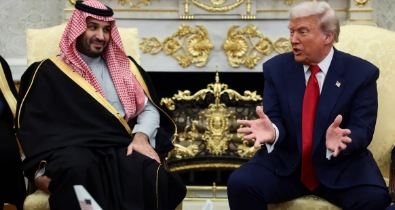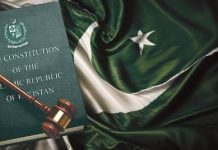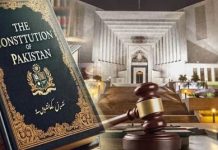In a landmark moment for US–Saudi relations, Crown Prince Mohammed bin Salman’s recent visit to Washington and his meeting with President Donald Trump has accelerated and deepened a transformative strategic package between the two countries. Once strained by controversies such as the 2018 killing of journalist Jamal Khashoggi, their partnership now appears to be entering a new chapter grounded in mutual economic ambition, defense cooperation, and a pragmatic understanding of past tensions.
During his US trip, MBS and Trump finalized a “historic” Strategic Defence Agreement, reinforcing America’s role as a regional security enabler and streamlining US defense companies’ operations in Saudi Arabia.
Notably, Trump approved a major defense sales package that includes F-35 jets — a long-sought capability by Riyadh. Reports suggest that Saudi Arabia could buy as many as 48 of the jets.
On the economic front, MBS pledged to significantly increase Saudi investment in the United States, taking the figure from an earlier $600 billion commitment to nearly $1 trillion.
This surge underscores the Crown Prince’s ambition to deepen US–Saudi economic ties beyond oil — tapping into sectors like artificial intelligence, infrastructure, and critical minerals.
Indeed, their agenda included agreements on civil nuclear energy cooperation, an AI Memorandum of Understanding, and a framework for critical minerals — each designed to boost industrial and technological collaboration.
Through these deals, the US aims to safeguard its broader supply chains and reinforce its technological leadership, while Saudi Arabia bets on diversification in line with its Vision 2030.
This rapprochement carries strong symbolic weight. MBS’s trip to Washington was his first since 2018, following the global uproar over Khashoggi’s murder. The very fact that such high-stakes cooperation — including advanced arms sales — has moved forward points to a tacit, if uneasy, reconciliation.
Analysts suggest that both sides have quietly agreed to put old grievances on the back burner in favor of strategic gains. While human rights concerns remain alive, there’s a clear signal that they will not derail the renewed partnership. The US continues to voice support for nonproliferation and good governance, but geopolitics appears to be taking priority.
Strategically, the alignment comes at a crucial moment: Riyadh seeks greater security guarantees amid regional volatility, while Washington is eager to deepen ties with a Gulf power that can act as a counterweight in a shifting Middle East. For Saudi Arabia, advanced US military hardware and promises of long-term economic engagement remain indispensable. For the US, securing Saudi capital, access to AI and critical minerals, and strengthened defense ties supports both its economic and security imperatives.
In sum, Crown Prince Mohammed bin Salman’s visit to the United States and his summit with Trump have not just reaffirmed the old alliance — they have reshaped it. What emerges is a more dynamic, high-stakes partnership that seems designed to carry both nations well into the coming decade, even as the shadow of Khashoggi lingers in the background.

















